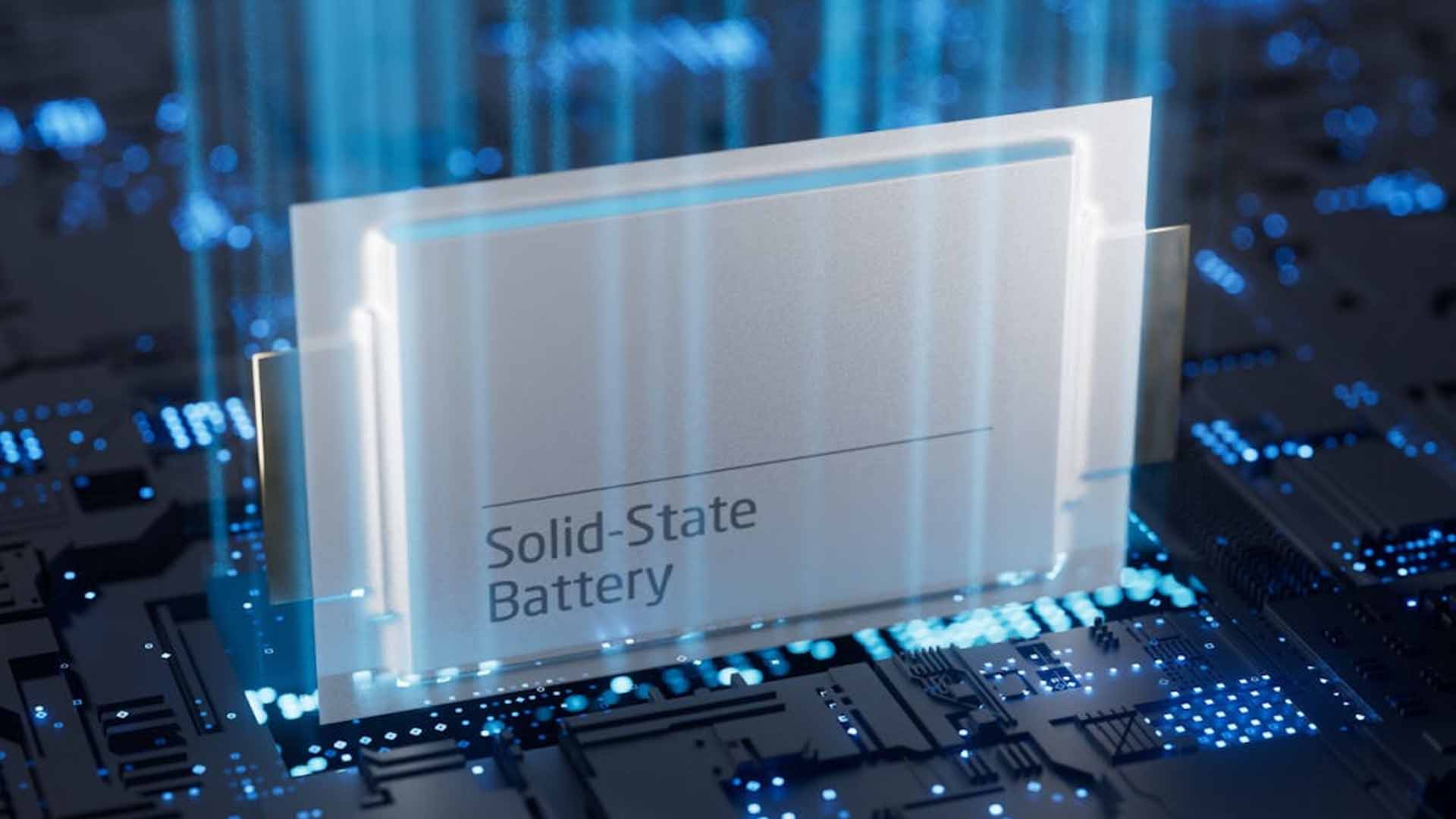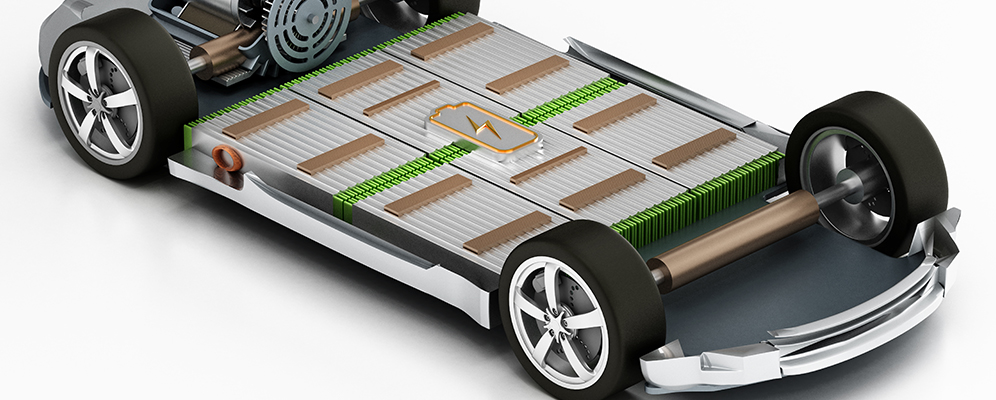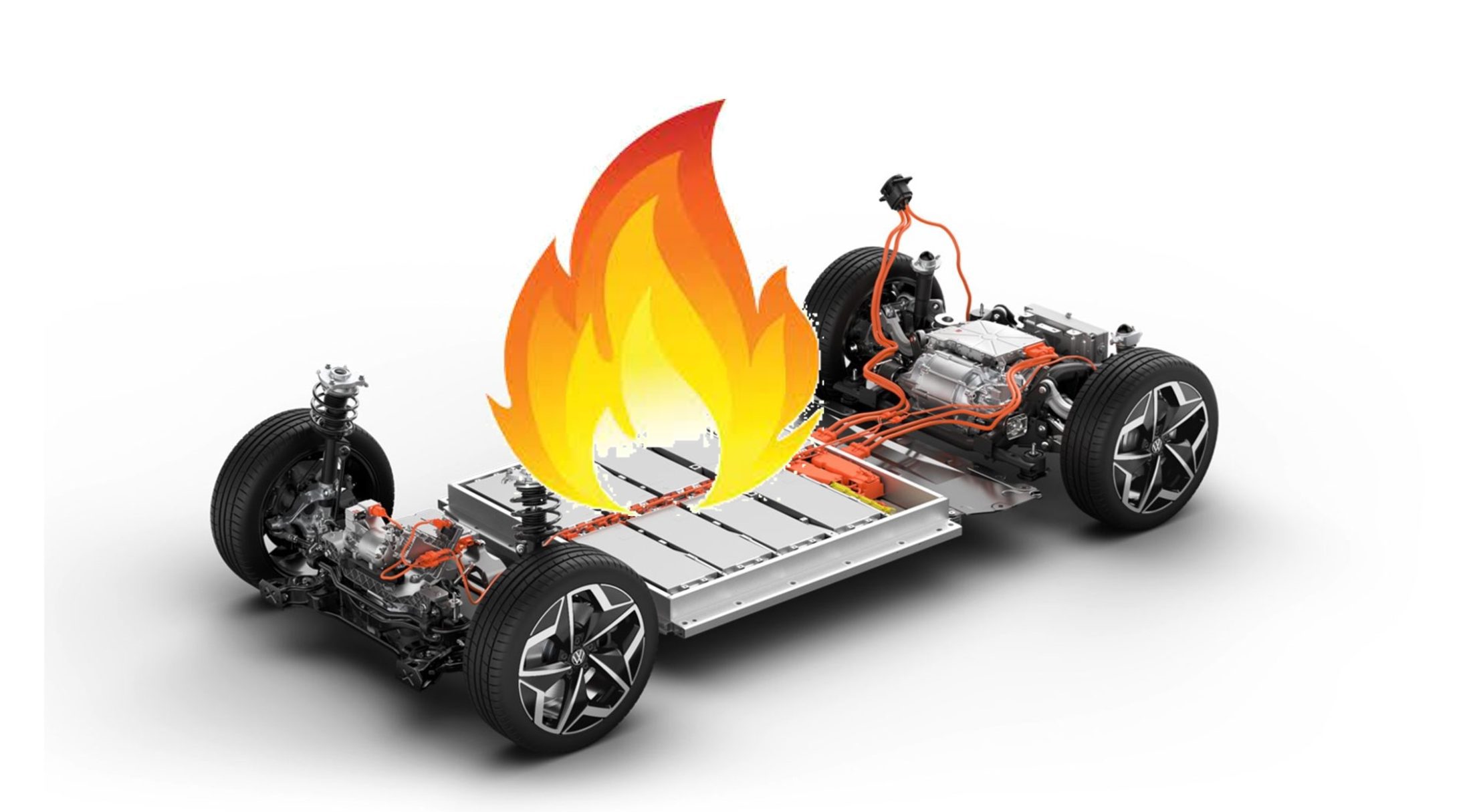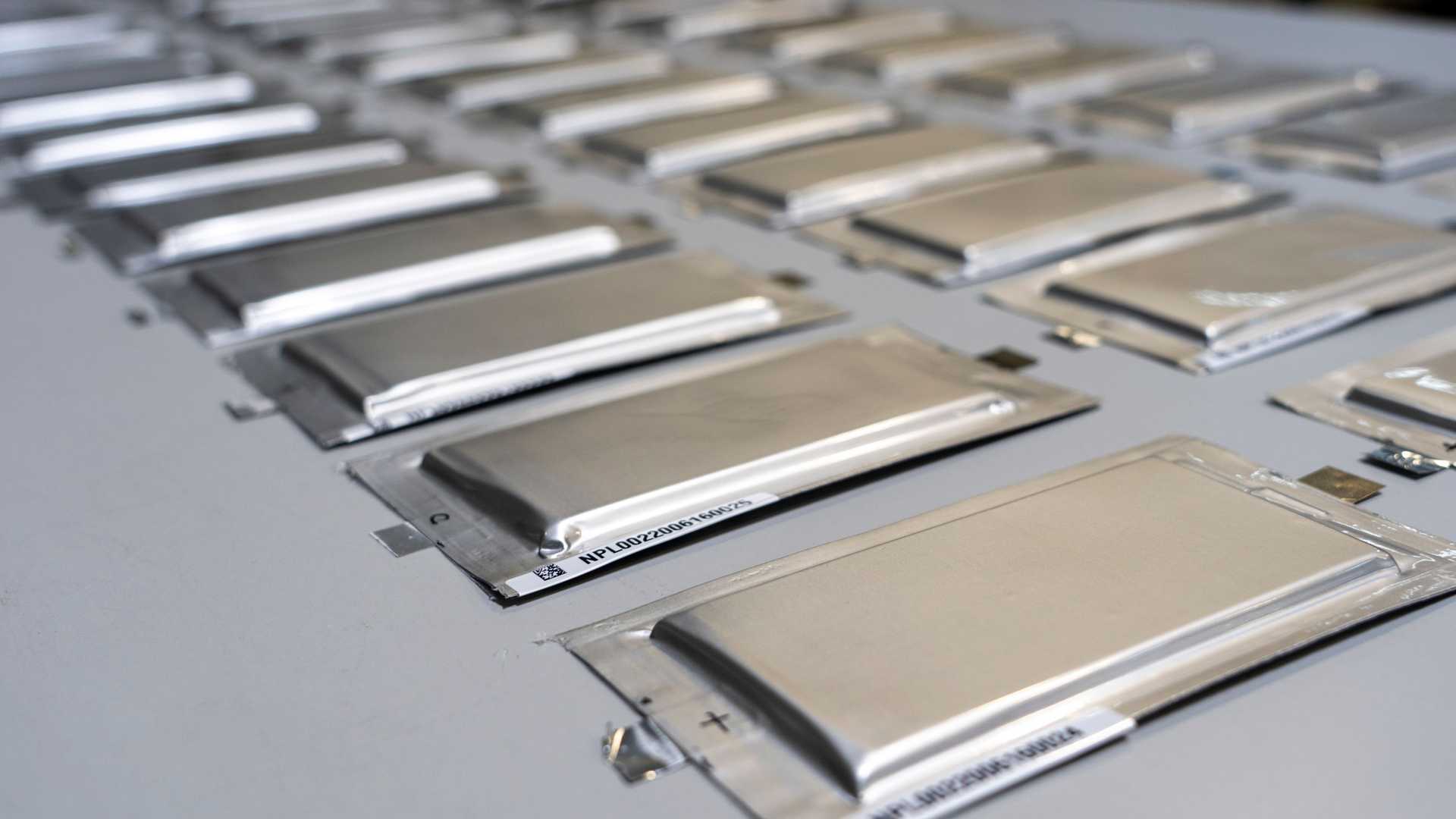Table of Contents
 Solid-State Battery
Solid-State Battery
In the middle of our push for sustainable energy, the electric vehicle (EV) industry stands out as a growing trend, garnering strong backing from governments worldwide. As we move towards more environmentally friendly modes of transportation, batteries have emerged as the backbone of the EV revolution, accounting for 60% of the cost of an electric vehicle. EVs have been powered by various battery technologies, including lithium-ion, nickel-metal hydride, lead-acid, and ultracapacitors. However, safety issues have emerged. Using liquid electrolytes in these batteries has resulted in explosions and fires, raising serious concerns about the technology’s reliability. In this context, the spotlight turns to solid-state batteries, poised as a game-changing solution. This article delves into the factors underlying these incidents, highlighting the critical role of electrolytes, and explores how the adoption of solid-state batteries can address these challenges and revolutionize safety in the EV sector.
What is a Solid-state Battery?

John Goodenough, the father of lithium-ion batteries, introduced solid-state batteries. All-solid-state batteries (ASSBs) are prevailingly acknowledged as the most promising candidate for next-generation energy storage. They primarily benefit from their high energy density and safety by incorporating non-flammable solid-state electrolytes (SSEs) and high-voltage cathode materials. Notably, the appreciable merits of ASSBs originate from the nature of SSEs in terms of high single-ion conductivity, outstanding thermal stability, and simplified packaging design. That means the critical difference is the replacement of a Liquid electrolyte with a non-flammable solid electrolyte.
Working Principle of Solid-state Battery

A solid-state battery is a type of battery that uses solid-state electrolytes rather than liquid electrolytes like traditional batteries It is made up of three main parts: a positive electrode (cathode), a negative electrode (anode), and a solid-state electrolyte sandwiched between them. The electrodes are made of ion-storage and –release materials and the solid-state electrolyte allows ion movement between the electrodes. The battery goes through charging and discharging cycles while in use. Ions (charged particles) move from the cathode to the anode during charging. Ions move from the anode to the cathode during discharging. This ion movement transports electrical charge, allowing the battery to store and release energy.
What is a Solid-state Electrolyte?

A solid-state electrolyte is a substance that exhibits ion conduction properties while maintaining a solid physical state, in contrast to conventional liquid electrolytes typically utilized in batteries and fuel cells. Electrolytes play a crucial role in electrochemical devices as they facilitate the transportation of ions between the anode and cathode, thereby facilitating the conduction of electric current. Unlike a liquid electrolyte, ionic conduction in solid-state electrolytes occurs within a solid crystal lattice. These materials have received considerable attention owing to several advantages they possess in comparison to liquid electrolytes, which include:
Safety
Solid-state electrolytes can be more stable and less prone to leakage or thermal runaway than liquid electrolytes, which can be flammable and potentially hazardous.
Energy Density
Solid-state electrolytes can enable the use of higher energy-density electrode materials, leading to batteries with greater energy storage capacity.
Temperature Stability
Solid-state electrolytes can operate over a wider range of temperatures without experiencing freezing or boiling, making them suitable for extreme environments.
Longevity
Solid electrolytes can potentially enhance the durability and cycle life of batteries and other electrochemical devices.
Compatibility
Solid-state electrolytes can reduce or eliminate issues related to electrode-electrolyte compatibility and forming solid-electrolyte interphase (SEI) layers, common in liquid electrolyte systems.
Researchers have been investigating various solid-state electrolyte materials, including Ceramic Electrolytes, Polymer Electrolytes, Glass Electrolytes, Composite Electrolytes etc.
Why aren’t solid-state batteries used in EVs already?

Solid-state batteries are available in much smaller devices such as smartwatches, pacemakers, and RFID tags. Incorporating solid-state batteries into electric vehicles (EVs) is an attractive prospect that promises increased safety, energy density, and possibly shorter charging times. Despite their promise, solid-state batteries have yet to become commonplace in the EV industry for various reasons. Like these
Technological Challenges:-
Developing solid-state batteries with high ionic conductivity and stability at different temperatures is difficult. Overcoming these technical challenges is critical to ensuring that solid-state batteries can match or outperform existing lithium-ion batteries in terms of performance.
Cost:-
Solid-state battery production is currently more expensive than conventional lithium-ion. Manufacturing processes, specialized materials, and technologies that produce solid-state electrolytes contribute to higher production costs. Cost is a critical factor in maintaining competitive pricing for consumers in the EV market.
Scale and Availability:-
Meeting the EV market’s demand for solid-state batteries will be a significant challenge. The existing lithium-ion battery manufacturing infrastructure is extensive and well-established, making it difficult for newer technologies like solid-state batteries to catch up in production capacity and efficiency.
Testing and Validation:-
To ensure that new battery technologies meet safety, performance, and longevity standards, they must do rigorous testing and validation. The regulatory and certification processes for incorporating new battery technologies into vehicles are time-consuming and costly.
Commercial viability:-
Due to the risks associated with unproven technologies, EV manufacturers are wary of adopting new battery technologies. They must ensure that any new technology they incorporate into their vehicles is dependable and will not cause problems that will harm their brand’s reputation or customer trust.
Legacy Investments:-
Many EV companies have invested significantly in lithium-ion battery technologies, including R&D and manufacturing facilities. Transitioning to solid-state batteries would necessitate rethinking these investments, potentially disrupting their existing supply chains.
Market Timing:-
Solid-state battery technology and manufacturing processes are still being refined. As with any emerging technology, achieving the necessary performance, reliability, and cost-effectiveness levels takes time to make a compelling case for widespread adoption
Can solid-state technology reduce risk of fire in EVs?

After hearing terrifying stories of battery fires in several EVs, the public’s perception of EVs has changed. But the lithium-ion battery truly deserves to be recognized as the best. If replaced with a solid-state equivalent, the EV’s fire risk drops significantly. Solid-state batteries don’t pose the same fire hazard as lithium-ion ones because they don’t use flammable liquid electrolytes. Although fires caused by lithium-ion batteries are uncommon due to protective casings and other measures taken by automakers, when they do occur, they can be devastating and require thousands of gallons of water to put out. The construction of fireproof EVs benefits motorists, residents, and fire departments. So yes, solid-state batteries significantly reduce the risk of battery fire.
However, the cause of the fire is not always liquid electrolyte; other factors may be involved. External impacts and collisions can cause short circuits and internal damage to the battery pack. Overcharging, malfunctioning charging equipment, and improper charging practices can all cause overheating and fires. Battery flaws, inconsistencies in manufacturing, and thermal management issues can all lead to battery overheating and thermal runaway. Furthermore, battery degradation over time, extreme ambient temperatures, and accident exposure to hazardous materials can all increase the risk of EV fires. When addressing EV fire safety and continuing to improve battery technology and safety measures, it’s critical to consider a combination of these factors.
Conclusion
Solid-state batteries are a beacon of innovation in the growth of energy storage, promising to transform the landscape of technology and sustainability. The core assumption of these batteries relies upon the coordinated movement of ions via a solid electrolyte, which not only strengthens safety but also pushes energy density and temperature stability to new heights. This fundamental shift has sparked hope for a safer, more efficient energy future. However, hurdles emerge as the trip progresses, from optimizing ion conductivity and improving electrode-electrolyte interfaces to reducing production processes for commercial practicality. However, as research and development continue rapidly, solid-state batteries promise to break down barriers, bringing in a new era of energy storage and catalyzing innovation across several industries. This scientific journey can improve batteries, fuel cells, and a wide range of electrochemical devices, revealing a future where safety and performance exist effortlessly.
Read More:- Toyota Plans to Dominate EV Market by Providing 1,200 km Range using Solid-State Battery








